As breweries increasingly consider craft beer’s environmental impact, many are turning toward more sustainable ingredients to reduce their footprint.
The post Treading Lightly: Breweries Reduce Environmental Impact appeared first on CraftBeer.com.
As breweries increasingly consider craft beer’s environmental impact, many are turning toward more sustainable ingredients to reduce their footprint.
The post Treading Lightly: Breweries Reduce Environmental Impact appeared first on CraftBeer.com.
Hops once destined for beer have found a new prominence in hard seltzers, kombucha, and cocktails.
The post New Hope For Hops appeared first on CraftBeer.com.
 This week I welcome back John Palmer to discuss English and American Pale Ales and IPAs and how water shapes the flavor of these beers. Subscribe on iTunes to Audio version or Video version or Spotify or Google Play Download the MP3 File– Right Click and Save As to download this mp3 file. Your browser […]
This week I welcome back John Palmer to discuss English and American Pale Ales and IPAs and how water shapes the flavor of these beers. Subscribe on iTunes to Audio version or Video version or Spotify or Google Play Download the MP3 File– Right Click and Save As to download this mp3 file. Your browser […] 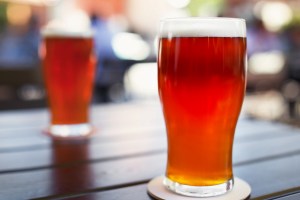
Cowaramup Brewing's Jeremy Good dishes up a stone cold classic IPA featuring the wonderful Mystic hop.
The post Recipe of the week: Old Blighty IPA appeared first on Beer & Brewer.
Back Home Beer brings to life Iranian and Middle Eastern ingredients and flavors, and celebrates the communal joy of brewing and bonding with one another over beer.
The post Transporting Beer Drinkers ‘Back Home’ with Middle Eastern Flair appeared first on CraftBeer.com.
 This week I welcome back Stan Hieronymus to discuss New Zealand hops, new hop varieties and their application in India Pale Ales. Subscribe on iTunes to Audio version or Video version or Spotify or Google Play Download the MP3 File– Right Click and Save As to download this mp3 file. Your browser does not support […]
This week I welcome back Stan Hieronymus to discuss New Zealand hops, new hop varieties and their application in India Pale Ales. Subscribe on iTunes to Audio version or Video version or Spotify or Google Play Download the MP3 File– Right Click and Save As to download this mp3 file. Your browser does not support […] Thiols are sulfur-containing compounds that are often potent aromatics. The ones brewers are excited about are tropical, winey, and citrusy, while other thiols are intensely unpleasant with aromas of garlic or rotten eggs... which is why the thiol mercaptan is added to natural gas to alert people to leaks. The "skunky" aroma of light-struck beer is also 3-methyl-2-butene-1-thiol.
Unlike many other beer aromatics that require concentrations in the ppm (parts per million) or ppb (parts per billion) many thiols have an aroma threshold in the range of 5-70 ppt (parts per trillion). This means that it doesn't take much of them to be apparent, but also means that it doesn't require "high" concentrations to become dominant.
In terms of positive beer and wine aromatics, the thiols that get the most attention are 4MMP, 3MH, 3MHA, and 3S4MP. These have perceptions that range from passionfruit, to grapefruit, to rhubarb. These are the intense aromatics that give New Zealand Sauvignon Blanc wines their distinct aromas and are found free at low-levels in many New Zealand hops (as well as some other varieties from around the world).
Most of the thiols found in hops, malt, and other botanicals are bound and thus not active aromatically. Enzymes are required to free them. There are wine strains available capable of this, but getting those genes into brewer's yeast requires more work.
Bound thiols are found in both malt and hops, but levels vary widely. The bond in need of breaking comes in two "flavors" Cysteinylated (Cys) and Glutathionylated (Glu). The vast majority (90%+) in both malt and hops is Glu. The IRC7 gene in certain wine strains and Omega's Cosmic Punch can only work on the less common Cys. As a result, mash hops are most potentially beneficial for Cosmic Punch, as the enzymes in the mash (especially in the acid-protein rest temperature range) can help convert Glu to Cys. Luckily some less expensive hop varieties have the highest levels of bound thiols. We've used Saaz, Cascade, and Calypso with good results.
The more intense strains like Berkeley Yeast Tropics line and Omega's Helio Gazer, Star Party, and Lunar Crush can simply be added to a standard recipe with or without whirlpool hops. Rather than having more copies of the IRC7 gene, they have a wholly different gene which can free Glu-thiols directly. The IRC7 gene in Cosmic Punch is "sourced" from yeast, while patB Omega uses in the more assertive strains is from a bacteria (if transgenic CRISPR/Cas9 gene modification is a step too far for you). We fermented a kettle sour which only had a small dose of hexalone (isomerized hop extract for head retention) with London Tropics. The result was intensely passion-fruity, so much so that it could almost pass a fruit beer.
GM (genetically modified) yeast strains aren't allowed in commercial beers in many countries (e.g., Canada, New Zealand). As a result there are labs working with wild isolates capable of freeing thiols for co-fermentations (e.g., CHR Hansen - it is primarily marketed for NA beers) and breeding strains with heightened thiol freeing capabilities (e.g., Escarpment). Omega initially worked on yeast breeding between English ale and a wine strain capable of freeing thiols... our trials with it (Designer Baby) were interesting, but had too much of the wine strain's idiosyncrasies present (poor flocculation especially).
Pros:
-Intense aromatics that are otherwise impossible to achieve from hops, malt, and yeast
-Thiols have incredibly low aroma thresholds... measured in ppt (parts per trillion)
-Thiols are "free" no expensive hops or fruit required
-Thiols may help increase shelf-life by scavenging oxygen
Cons:
-Higher perceived "sulfur" aromatics are frequent in thiol-freeing strains
-Some brewers/consumers/countries prefer to avoid GM ingredients
-Thiols can be "one note"... is it really that different from adding a jar of passion fruit extract?
-Repitching the yeast doesn't make as much sense if you also want to brew English Ales, Porters/Stouts etc.
Initially there was a focus on maximizing thiol concentration. This could include colder fermentation temperatures, mash hops, and engineering strains with more assertive genes. Like most aspects of brewing (or cooking) maximizing a single flavor compound doesn't usually result in the best overall flavor or balance.
Thiols aren't typically a "primary" aromatic in beer, so a beer with over-the-top thiol concentration without anything to play off of can taste artificial. On the other hand, some of our heavily dry hopped DIPAs have tested at over 100X the flavor threshold for 3MH and still weren't the primary aroma thanks to competition from the "traditional" hop aromatics. From those test, I wouldn't worry about dry hopping removing all of the thiols.
As a general rule, I'd suggest using a more restrained approach to thiols in lighter/cleaner/simpler beers. It doesn't take much to add a unique twist to a lager or American wheat, where a double-dry-hopped DIPA or fruit beer may benefit from a much higher amount. In the end it's about your palate and goals for a beer.
In my experience expressing thiols doesn't make every hoppy beer better. They add a distinct note that can greatly enhance the perception of passionfruit-type aromatics. That is a wonderful contribution when you are leaning into those flavors, but can be distracting or muddle other flavors. For example, I love the "mango popsicle" aroma of great Simcoe. However, with one of the intense strains like London Tropics or Helio Gazer in an all-Simcoe beer can become more generically "tropical" rather than varietal "mango." On the other hand, when dry hopping with passion-fruity Galaxy, or brewing with actual passionfruit the thiol note helps to enhance the existing aromatics.
Hand-in-hand with thiol-expressing yeast goes Phantasm. It is essentially the dried and powdered remnants of the highest-thiol New Zealand Sauvignon Blanc grapes. As a result it comes with a high price-tag of ~$35/lb. It really doesn't smell like much before fermentation. Added to the whirlpool it adds a huge amount of bound thiols for the yeast to work on.
During fermentation I detect a distinct "white grape" flavor and aroma that I don't get from other thiol-expressing ferments that rely on grain and hops alone for bound precursors. A lot of this drops out with the yeast however and the finished beers are rarely as distinct. To my palate the added expense is hard to justify in a highly-dry-hopped beer where the thiols are competing against other big aromatics. Unless you lean into those aromatics with a hop like Nelson Sauvin. I like Phantasm best when it is paired with actual white wine grapes, or in a simple base where it can star.
We haven't used Berkely Yeast's "Thiol Boost" additive yet... but I'm just not that excited about a 15X increase on the already intense London Tropics level of 3MH. I'd be interested in herbs or additives that could push other unique thiol aromatics that we aren't getting from grain/hops.
At Sapwood Cellars, we've brewed a few dozen batches between Cosmic Punch, London Tropics, Lunar Crush, and experimental isolates. I've enjoyed most of them, but a handful stand-out as beers I loved!
Cosmic Rings: Galaxy and Citra is one of our favorite combinations... but we have had a difficult time sourcing great Galaxy (that doesn't taste like honey roasted peanuts). This all-Citra double-dry-hopped pale ale starts with New Zealand Taiheke (Cascade) in the mash and kettle. It's one of our favorite whirlpool hops because it is low alpha acid and has a beautiful tropical aroma... not to mention a lower price compared to other New Zealand varieties like Nelson Sauvin and Riwaka. Then we ferment with Omega's Cosmic Punch which brings some tropical aromatics without becoming distracting or artificial. Finally we dry hop with Citra and Citra Cryo at a combined 3 lbs/bbl.
Tropical Pop: Kettle sour fermented with Berkeley Yeast London Tropics along with passion fruit and mango purees. Passion fruit is expensive, fermenting with London Tropics boosted the passion fruit aroma allowing us to use less without sacrificing the aroma intensity.
Field Learning: As a homebrewer I loved being able to dump a bottle of thiol-rich New Zealand Sauvignon Blanc into a keg of mixed-ferm saison. That wouldn't be legal commercially, but what we did for this collab with Bissell Brothers was to brew a restrained base with Hallertau Blanc in the mash and Phantasm in the whirlpool and age it in fresh Sauvignon Blanc barrels along with Bissell's house culture. After a year we added fresh Chardonnay grapes from Crow Vineyards here in Maryland. The tropical notes from the thiols survived barrel aging and gave the beer depth we wouldn't have gotten from grapes and barrel alone.
Are thiols a scam? No, but they also aren't an innovation that fundamentally changes what it takes to make a delicious beer. Consider a thiol-freeing yeast when additional passionfruit-type aromatics will enhance your beer. Don't worry about maximizing the thiols unless you they will be competing against other strong aromatics.
I suspect that this is just the lead in to even more exotic genetically modified yeast strains (we have a pitch of Berkeley's Sunburst Chico which is modified to express high levels of pineapple-y ethyl butyrate). If you can produce a flavor compound without the cost, environmental impact, variability of growing it I suspect the economic pressures will be too great! That said, making delicious beers isn't about maximizing one or two compounds (in the same way that vanilla flavoring is inexpensive, but doesn't fully replace the depth and complexity of real vanilla beans).
 Alex Wenner joins me this week to discuss starting his brewery Lasting Joy in the Hudson Valley. Subscribe on iTunes to Audio version or Video version or Spotify or Google Play Download the MP3 File– Right Click and Save As to download this mp3 file. I apologize – we had some audio issues recording this […]
Alex Wenner joins me this week to discuss starting his brewery Lasting Joy in the Hudson Valley. Subscribe on iTunes to Audio version or Video version or Spotify or Google Play Download the MP3 File– Right Click and Save As to download this mp3 file. I apologize – we had some audio issues recording this […] This July marks five years since I left my day job with the federal government to brew full-time. We filled our first barrel with mixed-fermentation saison before opening the tasting room at Sapwood Cellars. Since then, we are up to 80 oak barrels with a dedicated suite for mixed-fermentation. So, I thought it would be a good time to sit down and reflect on the lessons that Scott and I have learned over the years! The things we got right, the things we got wrong, and where we are going from here!
Luckily, we've had a pretty good run so far! We've cultivated a great group of supporters in our Wood Club. Neologism (gin-barrel-aged Cascade/Simcoe Cryo dry-hopped pale sour) was named one of Craft Beer & Brewing's Top-20 beers of 2022 by way of winning a massive blind tasting. Despite the pandemic we've been able to modestly expand (production, staff, and space)! We're even shipping beers around the US through Tavour!
I recently realized that Google discontinued Feedburner in 2021... which is why you haven't gotten an email from me in a while. I've changed The Mad Fermentationist over to a new email service, so if you've signed up you should get emails for new posts going forward! If you want more emails from me, I write the near-weekly Sapwood Newsletter (with details on new beers often including info on ingredients, process, and equipment)!
Diverse Microflora - It is certainly simpler to have a single "house" culture. It allows for relatively worry-free blending, but doesn't leave as much room for unique flavors. Maintaining multiple cultures, we have to worry about the microbes from one barrel over-attenuating in the bottle if they are more attenuative than others in the blend. However, the variety of flavors expressed and the options for blending is worth the effort at our scale. We've been even happier since we started selecting our favorite barrels and using them to inoculate subsequent batches. Now we can select which character fits a pale sour vs. a sour red.
Last week we blended our second batch of Growth Rings (three year blend). To ensure all the microbes have time to get to know each other, we blended the four barrels (all different pale base beers) into a tote. They'll sit there for a couple months to ensure the gravity is stable before priming and bottling.
Balancing Planning and Creativity - We started 2023 with a rough timeline of the 20 or so barrel-aged mixed-ferm we'll release. However, when we fill barrels there generally isn't a specific plan for which barrel will be in which beer. Pale, wine-barrel-aged beer can be delightful on it's own, or serve as a great base of fruit, herbs, or dry hopping. When we taste them, we get to decide what will make the best possible beer. However, it's also nice to have unique bases/barrels earmarked for a particular purpose. Some examples of those include Opulence (sour red with dried sour cherries in the bourbon and red wine barrels), a Brett'd Belgian Tripel in Calvados (apple brandy), or Port barrels for There Are No Edges (Vin de Céréale).
Tracking Barrels - Using Google Sheets has worked out well for us. I can sort based on fill date, final gravity, base beer etc. It allows me to sit on my couch at home and look at what beers we have in need of fruit, blending, packaging etc. Barrels still fall through the cracks (nothing is more heartbreaking than tasting a barrel that is old/stale and seeing a note about how good it was six months ago). Sometimes a beer is delicious, it just doesn't fit into a blend.
Blending with Others - Whether it is our tasting room manager (Spencer), Lead Brewer (Ken), homebrewing friends, fellow brewers (e.g., the brewers from Other Half for a collab) etc. Tasting barrels with other people helps improve your palate, riff on ideas, and make more broadly appealing results. We all have flavor "blind spots" and it is a good idea to have other people looking too. It's fun to riff off other people's ideas and come up with flavor combinations that neither of you would have made on your own.
Packaging - Our general approach to packaging has been a big success... once we started measuring the dissolved CO2 in the beer rather than relying on time/temperature/pressure. We blend barrels or transfer fruited beers to our blending tank and cold crash. The day before bottling we'll push in sugar (boiled in water) along with Premier Cuvee champagne yeast (rehydrated with a small amount of Start-Up/GoFerm nutrient). We then carbonate the beer to ~2 vol of CO2, with the sugar and yeast taking the beer the rest of the way. We fill on a bottler (XpressFill) that purges and counter-pressure fills. So far it's resulted in relatively quick/clean refermentations with reliable carbonation.
Not Allocating Time - It is easy to put-off barrel-aged beers for more pressing concerns. When there are DIPAs to dry hop, Pilsners to can, and excises taxes to exercise the sour beers are often pushed to the side. It's rare that a week or two of aging in one direction or another makes a dramatic difference... but it's hard to get the most out of a barrel program if it is always at the bottom of the priority list. We're getting better at it, but I still wish from the start I'd blocked off a specific time/day each week to taste barrels, trial blends, source ingredients, prop microbes etc.
Over-Correcting - Initially we weren't getting enough acidity in some of our beers, so we started pulling levers... colder rinsing barrels, lower hopping rates etc. Then our beers started becoming too sour, so we started veering back in the other direction. Managing a barrel program is like driving a cruise ship, it is difficult to pivot quickly! It's difficult to step back and tell if there is something causing one specific batch from being too sour (or not sour enough) or if there is a systemic issue.
I think we would have been well served to do a better mix starting early (some barrels cold or no-rise, more with just Brett etc.). This would have given us more options when it came to blending over- or under-soured beers.
Appreciating the Impact of Fruit On Acidity - Early on to help out some of those under-acidified beers, we went onto fruit. I was surprised how little additional acidity they picked up from refermentation. Sure adding a really acidic fruit (e.g., black currants for Fellow Feeling) contributed acidity, but just refermenting on wine grapes or peaches did not. However, as our cultures "matured" we suddenly had beers dropping from a tart pH of 3.5 to an obnoxiously-acidic 3.0 after going onto the fruit (2.8 pH was the lowest I measured). That's despite pitching rehydrated wine yeast to ensure a healthy and quick refermentation.
I thought maybe our resident lactic acid bacteria were becoming more hop tolerant, and the dilution of the beer with fruit was allowing them to kick into action. To test this we began adding a small amount of hop extract with the fruit (we use a 20% alpha extract from Hopsteiner). Our fruited beers stopped dropping pH nearly as much, and as an added benefit the head retention improved considerably.
Hot Side Hopping - I didn't appreciate how much of the classic funky lambic/saison profile originates with the hops. While we've always used a "restrained" dose of aged hops at the start of the boil (~.5 lbs/bbl), that just wasn't enough to give the beers the aromatic depth I was looking for. Recently we've been experimenting with a similar size whirlpool addition of cold-stored hops. So far the results are promising! I should have noticed that many of my favorite homebrewed Brett Saisons had big whirlpool additions and/or dry hopping... but those were all relatively quick turn-around and not barrel-aged. I'm glad Scott and Ken pushed to age some of our pale ales (pre-dry hopping) in barrels, an idea I wasn't excited about... but the results have been really delicious!
Barrel-aged sour beer seems to be a wide/shallow market at the moment. The people who love them are still searching them out, but the average beer drinker seems to have moved on to less "challenging" more "reliable" styles. It's hard to know how much the rapid expansion of the segment played into this loss of interest. I've heard of quite a few breweries down-sizing or eliminating barrel-aged sour beers... Luckily we still have 150 people in our Wood Club, which is a great way for us to get these beers into the hands of our biggest supporters and a base-level of sales for eight releases a year. We're aiming to make our mixed-ferm beers more "delicious" the sorts of beers that people want to drink a whole bottle of, not just drink an ounce or two at a share.
However, as we've ramped up the mixed-ferm bottle release schedule (2019 - 8, 2020 -11, 2021 - 13, 2022 - 16, and hopefully ~20 in 2023) we occasionally have bottles to spare. Rather than distribute them locally, we've partnered with Tavour (which ships to many states). They just released Homegrown Rule, a "Marylanbic" base with homegrown lemon verbena (from my yard) and pineapple sage (from Ken's garden). It's tart and snappy, with plenty of our house microbe character, augmented by the citrusy-green notes of the herbs.
(HERSHEY, PA) – Tröegs Independent Brewing announces the release of Field Study, an IPA inspired by the brewery’s annual trip to the Pacific Northwest’s Yakima Valley for hop selection. Like many of its […]
The post Tröegs Independent Brewing Announces Field Study IPA appeared first on The Full Pint - Craft Beer News.
Here are five small breweries that have opened since 2020. If you haven’t heard about them yet, it’s likely you will soon.
The post Five Young Breweries You’ll Be Hearing About Soon appeared first on CraftBeer.com.
 Scott Janish from Sapwood Cellars and Simon Carlsen from CHR Hansen join me this week to discuss using innovative yeasts to create low alcohol and non-alcoholic beers. Subscribe on iTunes to Audio version or Video version or Spotify or Google Play Download the MP3 File– Right Click and Save As to download this mp3 file. […]
Scott Janish from Sapwood Cellars and Simon Carlsen from CHR Hansen join me this week to discuss using innovative yeasts to create low alcohol and non-alcoholic beers. Subscribe on iTunes to Audio version or Video version or Spotify or Google Play Download the MP3 File– Right Click and Save As to download this mp3 file. […] 
The event brings together world-leading brewers, scientists and hop chemists during the 2023 hop harvest.
The post New Zealand’s Hāpi Symposium returns appeared first on Beer & Brewer.
 Michael Tonsmeire from Sapwood Cellars joins us this week to discuss some of his recent innovative lager recipes. Subscribe on iTunes to Audio version or Video version or Spotify or Google Play Download the MP3 File– Right Click and Save As to download this mp3 file. Your browser does not support the audio element. Topics […]
Michael Tonsmeire from Sapwood Cellars joins us this week to discuss some of his recent innovative lager recipes. Subscribe on iTunes to Audio version or Video version or Spotify or Google Play Download the MP3 File– Right Click and Save As to download this mp3 file. Your browser does not support the audio element. Topics […] 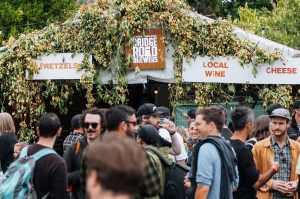
We've got a couple of double passes to give away as the hop harvest festival returns to Beechworth on March 25.
The post Win tickets to the High Country Hop appeared first on Beer & Brewer.
The connection between the craft beer world and ski culture is undeniable. A good beer is often a perfect way to cap a day on the slopes.
The post A Beer & Ski Lover’s Guide appeared first on CraftBeer.com.
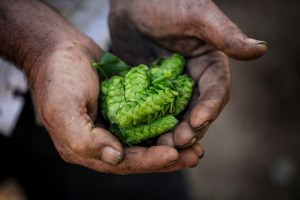
Growers plus brewers from Mountain Culture and Rocky Ridge discuss how advanced hop products and hopping techniques are shaping the future of hop forward beers.
The post Hop forward: On the frontier of beer appeared first on Beer & Brewer.
 This week Chris Graham and Vito Delucchi from MoreBeer join me to discuss how to free the thiols in your hops to create fruity IPAs and New England IPAs. Subscribe on iTunes to Audio version or Video version or Spotify or Google Play Download the MP3 File– Right Click and Save As to download this […]
This week Chris Graham and Vito Delucchi from MoreBeer join me to discuss how to free the thiols in your hops to create fruity IPAs and New England IPAs. Subscribe on iTunes to Audio version or Video version or Spotify or Google Play Download the MP3 File– Right Click and Save As to download this […] 
US brewery and their brewmaster Matt Brynildson will join local breweries at the hop harvest event in March.
The post Firestone Walker headline High Country Hop 2023 appeared first on Beer & Brewer.
We started this series of IPAs when we opened to showcase our favorite hop varieties. We recently released #22 (Citra-Motueka). All of the batches were 6.5-7.5% ABV, with similar malt bills (American pale barley, chit, wheat, and oats), fermented with an English-leaning yeast, and dry-hopped post-crash at 3-4 lbs/bbl. The table below is the average Untappd score of all batches dry hopped with the variety listed.
| Hop | Average |
| Motueka | 4.221 |
| Nelson | 4.190 |
| Azacca | 4.188 |
| Citra | 4.177 |
| Riwaka | 4.169 |
| Amarillo | 4.163 |
| Simcoe | 4.162 |
| Galaxy | 4.155 |
| Mosaic | 4.144 |
| Columbus | 4.129 |
| Hydra | 4.122 |
| Vic Secret | 4.122 |
| Strata | 4.107 |
The table below include all 65 "big batch" IPAs and DIPAs we've released that don't contain adjuncts (although I did include Phantasm beers). These are diverse in terms of recipe construction, alcohol strength, and dry hopping rate. As a result, the scores are a bit more prone to bias compared to the Cheater Hops data set.
| Hop | Average |
| Galaxy | 4.220 |
| Hallertau Blanc | 4.220 |
| Cashmere | 4.217 |
| Nelson | 4.203 |
| Motueka | 4.186 |
| Mosaic | 4.186 |
| Citra | 4.185 |
| Simcoe | 4.178 |
| Azacca | 4.157 |
| Riwaka | 4.150 |
| Amarillo | 4.141 |
| Vic Secret | 4.131 |
| Taiheke | 4.130 |
| Columbus | 4.129 |
| Strata | 4.113 |
| Hydra | 4.096 |
| Talus | 4.090 |
| Sabro | 4.075 |
| Lotus | 4.040 |
| Idaho Gem | 4.010 |
| Lemondrop | 4.010 |
| Sultana | 3.990 |
For some batches you'd expect to see a high rating due to pairing two great hops together (e.g., Nelson/Galaxy or Mosaic/Citra). Both varieties score well across all our beers, so no surprise combing them results in a well-rated IPA. More interesting is sorting by the average standard deviation for the hops included. This shows which combinations rated higher than expected given the average scores for those hops across all beers. Snip Snap (Citra/Galaxy), Cheater Hops #22 (Citra/Motueka), Shard Blade (Mosaic/Galaxy), Cheater Hops #13 (Mosaic/Simcoe), and The Dragon (Nelson Sauvin/Mosaic/Hallertau Blanc) were all in the top-10 "overachievers." These hop blends follow different approaches either "leaning into" a particular flavor (fruity, or winey) or balancing fruity with a danker variety.
Rounding out the top-10 are two all-Simcoe (Cheater Hops #12 and Drenched in Green), two all-Mosaic (Fundle Bundle and TDH Trial #1), and an all-Nelson beer (3S4MP). Certainly a sign that these hops can shine alone compared to Citra and Motueka which are highly rated in blends, but haven't exceled in single-hop beers (despite our best efforts). Of course you need a great lot of hops for this to work; the bottom-10 also includes single-hop beers featuring: Simcoe (Cheater Hops #9), Nelson Sauvin (Cheater Hops #11), and Mosaic (Fumble Bumble)!
Two beers with Galaxy and Nelson (Cheater X and X2) each had a standard deviation close to 0. They still rate well, but no better or worse than expected across all beers with Nelson or Galaxy.
Surprisingly three of the bottom four included three varieties Cheater Hops #7 (Simcoe, Citra, Mosaic) Cheater Hops #6 (Motueka, Mosaic, Simcoe) False Peak (Idaho 7, Sultana, Citra). Blending hops can create a generic "hoppiness." These beers may have been missing a distinct "wow" aroma for people to grab onto.
The high/low scores for different batches brewed with the same single hop variety really drives home how unreliable this data likely is. Without multiple batches hopped with the same hop combination, it is impossible to say with certainty if a beer scored well because of aromatic synergy or a delicious lot of hops. Luckily several of the top-rated combinations are beers we have brewed multiple times.
The data does suggest to me that using one or two varieties for the dry hop is the best bet for making the most appealing IPA unless you have something very specific in mind. Often when breweries use a large number of hop varieties in a beer it is to promote consistency (batch-to-batch and year-to-year). It would be interesting to expand the data set to include beers from other breweries. That would produce data that is less specific to our particular brewing approach, hop sourcing, and customers' palates.
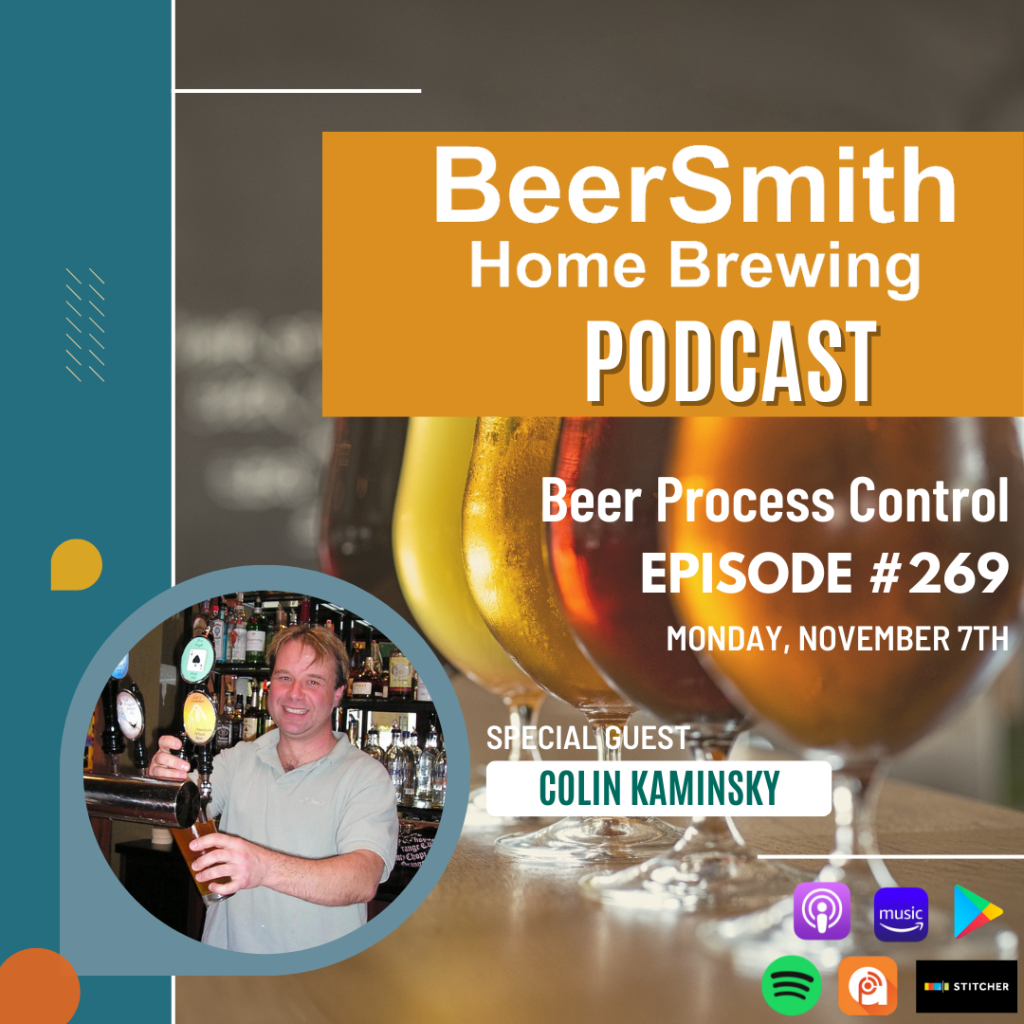 Colin Kaminski joins me this week to discuss his experiences with professional brewing process control and how it applies to the home brewer. Subscribe on iTunes to Audio version or Video version or Spotify or Google Play Download the MP3 File– Right Click and Save As to download this mp3 file. Your browser does not […]
Colin Kaminski joins me this week to discuss his experiences with professional brewing process control and how it applies to the home brewer. Subscribe on iTunes to Audio version or Video version or Spotify or Google Play Download the MP3 File– Right Click and Save As to download this mp3 file. Your browser does not […] When it comes to brewing delicious beer, there are few aspects more important than the yeast. A healthy fermentation allows the malt, hops, and adjuncts to shine. Pitching the right amount of healthy cells helps ensure that the finished beer has the intended alcohol, expected residual sweetness, and appropriate yeast character.
Over the last four years at Sapwood Cellars we've slowly improved our yeast handling. We've noticed improved fermentation consistency, and better tasting beers. Most of our process is excessive for a homebrewer, but it might give you some ideas!
Harvesting Yeast
We harvest yeast from moderate gravity beers when possible as these cells are less stressed and healthier as a result. Our general rhythm is to brew a pale ale with a fresh pitch, and harvest from that tank for an IPA and DIPA the following week. Once the pale ale fermentation is complete (repeated gravity readings, and no diacetyl or acetaldehyde sensory) we can and soft-crash to 56-58F (13-14C). Cold and dissolved CO2 encourage the yeast to settle out. Specific temperature and time are strain and tank dependent, but that works for most of the English-leaning strains we use (Boddington's, Conan, Whitbread, and the Thiolized-variants).
Once the beer has been cold for 24 hours, we attach a 1/2 bbl brink to the bottom of the tank and pasteurize through the line and brink with 180F (82C) water from our on-demand. 25 minutes hot ensures there aren't any stray microbes that will be passed onto the subsequent batches. After pushing out the water with CO2 pressure we spray the brink with cold water then pressurize it and the tank to ~10 PSI.
We then dump about a gallon (4L) from the T until the yeast looks good (creamy, off-white) and then begin collecting into the brink. You don't need to dump a large volume of yeast. By keeping steady pressure on the tank and slowly releasing pressure on the brink through the valve at the top we ensure that the yeast won't come out of the cone too quickly (which could punch through pulling in more beer than yeast) and won't foam up in the brink. It takes 10-15 minutes to fill the brink. Usually we are able to collect 110-130 lbs (50-60 kg) before yeast starts coming out the top of the brink.
We collect yeast before dry hopping to avoid having hops mixed in with the yeast. We also prefer the "less rough" flavor we achieve by dry hopping cold. If you dry hop early-mid fermentation and want to harvest, drop as much of the hops out as you can before crashing and harvesting.
Yeast Storage
Whenever possible we pitch within 72 hours of harvest. Larger yeast cultures generate more heat and thus tend to lose viability more rapidly. Store the yeast as cold as possible, which for us is ~36F (2C) in our walk-in. Ideally that would be closer to 32F (0C) to further slow its metabolism. Shake twice a day to dissipate hot-spots and vent down the pressure to knock-out CO2. If storing the yeast for more than a few days, attach a blow-off line to prevent pressure from building.
There are studies about various additives for maintaining high yeast viability. We've added phosphate buffer to prevent a drastic pH drop. It's difficult to tell from a single data point, but viability dropped from 95% to 89% after a week of storage. We've seen closer to 10% reductions the handful of times we've stored yeast that long previously.
We generally won't harvest and repitch beyond three generations (although recently we went to five). That's because with our limited number of tanks, variety of yeast strains, and canning schedule we'd eventually have to hold onto yeast for a couple of weeks before pitching or harvest from a strong beer.
Determining Cell Count and Viability
There are plenty of successful brewers who pitch a standard weight by barrel/gravity, but knowing how many live cells you actually have is a great way to improve consistency. It's especially valuable if you use a variety of strains or want to bring in a new strain. Our harvests of the same strain can vary by as much as three times in terms of live cells per g of slurry (~.5-1.5 billion cells). The cost of all of the equipment required is ~$500, less than a single commercial 10 bbl yeast pitch from some labs.
Start by shaking the brink to homogenize the culture. Then run a cup of yeast out, dump it (to avoid counting the cells packed around the port) and then pull a sample. The next step is to dilute the culture to a "workable" concentration - 1:100 for us. Too many cells packed together makes for a culture that is impossible/laborious to count, while too few raises the chances luck will throw-off the count. For a long time I diluted by volume, performing two sequential 10X dilutions with a micropipette. This had two drawbacks. First getting an accurate volume of yeast slurry is tricky because it is foamy and has small bits of trub that can plug-up the pipette. Second, we pitch by weight, so there was always some estimation when it came to converting the volume to a weight or the extra step of determining the physical density of the slurry by mixing with water in a graduated cylinder on a scale. What we do now is dilute by weight, which gives us cells per gram rather than cells per milliliter.
Our scale is accurate to .2 g, so weighing 1 g of yeast into 99 g of water has a ~20% margin of error. As a result I do 490 g of water with 5 g of the yeast slurry. This reduces the maximum margin of error to ~4%. After pouring the diluted culture back and forth to mix, I take 9.9 mL of the diluted culture with the micropipette and add .1 mL of a stock dye solution of Erythrosin B and phosphate buffer (1 g in 50mL of buffer). This results in a total dilution of 100X. You could go even further, a 10X dilution by weight (50 g yeast with 450 g of water) followed by a 10X dilution by volume (1 mL of the diluted culture with 8.9 mL water and .1 g of dye). Live cells are able to expel the Erythrosin B so they won't be stained, meaning any red yeast cells are dead. You can use a variety of other stains, but Erythrosin B is a food coloring and much safer to handle than methylene blue or trypan blue. Here's a post from Escarpmant Labs on using it inspired by my Tweet (which was in turn inspired by this).
Luckily the Boddingtons-type strain we use for most of our batches isn't "excessively" flocculent. When we fermented a run with Whitbread we ran into issues with the cells being too clumpy to count. Luckily BrewKaiser has a whole post on additions you can add to help. Phosphoric acid worked OK, but a local brewer suggested disodium EDTA, which I plan to buy before we do another run with a similar strain.
Next, place a couple drops on the diluted culture a hemocytometer, apply the slide cover, and stick it under a microscope (we have an Omax). Count the live and dead cells in five squares (each made up of 25 small squares) - four corners, and center. This provides a large enough sample size to avoid undue randomness. A small tally counter helps keep track. The standard rule is to count cells touching the left and top lines, but not the right or bottom. Count connected cells as two only if the daughter cell is more than half the size of the mother. Then I plug the totals into Inland Island's Yeast Cell Count Calculator. Usually our harvests are 80-90% viable off a fresh pitch, and they tend to go up from there on subsequent generations (90-95%). If your viability isn't great it could either be that the yeast isn't getting enough nutrients/oxygen, your initial pitching rate was too high or low, or that you are waiting too long to harvest.
There are automated solutions for yeast counting, but with some practice the whole processes will take less than 10 minutes.
Pitching YeastTo pitch, we attach the brink to a T inline during knock-out. With the brink on a scale we use CO2 to slowly push in the desired weight of yeast (calculated based on the cell count, wort gravity, and volume). We pitch during knock-out so the yeast mixes with the aerated wort as it goes into the fermentor. White Labs advocates using a pump to pitch their fresh yeast inline to achieve better mixing with the wort. Best practice is to do another cell count off the tank once knock-out is complete to validate your process (we did it a few times, but now trust our approach).
When we started brewing more double batches to fill our 20 bbl tanks, we were pitching enough cells for 20 bbls along with the first 10 bbls of wort. Our thought process was that the yeast wouldn't do much in the 3-4 hours before the second half of the wort went in. However, we found our fermentations were less reliable, often dragging towards terminal gravity, and the yeast from those batches had much lower viability than expected. Both of these issues improved significantly once we switched to pitching only enough cells for the initial knock-out volume. This allows for more growth and thus a higher proportion of younger yeast cells.
Hopefully this overview of our process is helpful for someone starting a new craft brewery, or looking to take their yeast management to the next level. As with anything in brewing, the more variables you can track and control the more consistency you'll have in your results. Yeast management isn't a "fun" topic, but it is one of the simplest things a brewery can do to increase consistency, improve flavor, and save money!
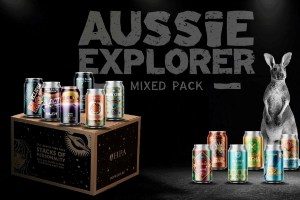
Get your hands on 12 separate beers that all showcase Hop Products Australia's proprietary varieties.
The post Win 1 of 3 Aussie Explorer mixed packs appeared first on Beer & Brewer.
(Kihei, HI) – Now available in Maui Brewing Company’s Kihei restaurant location, Hop Cargo Fresh Hop IPA. This fresh-hopped beer was made through an epic collaboration with Bale Breaker Brewing […]
The post Maui Brewing Collabs on Hop Cargo Fresh Hop IPA appeared first on The Full Pint - Craft Beer News.
(Vista, CA & Nampa, ID) Mother Earth’s annual fresh hop beer has been a staple since it began in 2011 and was solidified as a bona fide winner in 2017 when […]
The post Mother Earth Brew Co. Releases 2022 Fresh As It Gets appeared first on The Full Pint - Craft Beer News.
From brewery hotels to campgrounds, quirky Airbnbs to luxurious resorts, this is your guide to planning a craft beer weekend getaway.
The post AirbnBeers: Breweries with Hotels, Inns, Camping and More appeared first on CraftBeer.com.

Kiwi hop co-op hope new general manager's key strengths will help expand their worldwide partnerships.
The post NZ Hops target increased global sales and distribution appeared first on Beer & Brewer.
 John Palmer joins me to discuss his upcoming book as well as hold a general beer brewing question and answer session. Subscribe on iTunes to Audio version or Video version or Spotify or Google Play Download the MP3 File– Right Click and Save As to download this mp3 file. Your browser does not support the […]
John Palmer joins me to discuss his upcoming book as well as hold a general beer brewing question and answer session. Subscribe on iTunes to Audio version or Video version or Spotify or Google Play Download the MP3 File– Right Click and Save As to download this mp3 file. Your browser does not support the […]